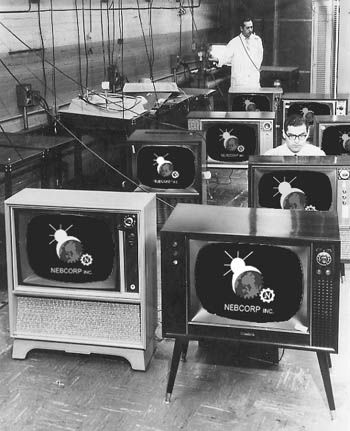
I’ve learned much from old appliances. On many occasions, a fuzzy television awoke my innate gift for engineering. Foil, paper clips, safety pins or the classic bent hanger, were my tools. I’ve even opened a T.V—I truly the believe manufactures, placing all those screws in the back, are a preventive measure. Maybe they expect you’ll give up, maybe that long process was a warning, giving time for the conscience to kick in. Whatever the intention, it couldn’t over shadow a trait, which either made me special or a glutton for punishment. Those green panels, with harden droppings of silver were calling, Fortunately (or unfortunately) for me. I’ve always been persistent.
Inside a metallic mesh, inanimate objects vibrated, releasing a burst of air. I clung to it. Like a venerated wise man, I sought a wooden console—really a flimsy wood coated with in adhesive paper. The speakers opened like barn doors, revealing shelves. It wasn’t always mine. The console was once off limits. Around 1995, my mothers friend, sold her Sony five compact disc changer, retiring the console, with the old tape deck stereo, to my room. It stood about three feet, making the final resting place for my thirteen-inch television and VCR—the tandem united.
I loved that stereo. It was perfect. It had two tape decks. The two speakers would open, like a hustler opening the flaps of his coat, and my index finger would scroll the sides of plastic boxes. I loved the tandem, not for what they were but for what they could provide. The needle, reading the metallic strip, produced my escape. No exaggeration. As the machines would break, I would operate: a hanger to fish out small pieces, a pair of pliers to turn up the sound, a pair of scissors to cut wire, a butter knife to pull out a stubborn VHS. I went through one obstacle, the machine, to find another. Ironically, the wires sending electrical signals, for me, became a conduit.
The art form is pleasing; yet the eyes distort. The ears can take in sounds, creating the most vivid images. When the eyes are closed, listening, one is internalizing, and the effects are life altering. The white or black suburban boy is now gangster or more street—something I can identity with. I would speak of music, film, television, and its effect on the actual street dweller, but I don’t know personally. However, I believe a person is more likely to internalize fantasy or a distorted reality before items closely related to the world they see.
As for my beloved appliances, which link me to my beloved content, they’ve taught me the strongest lesson. Though these inanimate objects never reproached my gluttony for their individual genius, I can’t blame them for their effect. The film KIDS and my present day Freudian slips about, about Latin women talking widely about sex, all point to my young mind, insisting that my thumb was justified in its repeated use of the rewind button.
